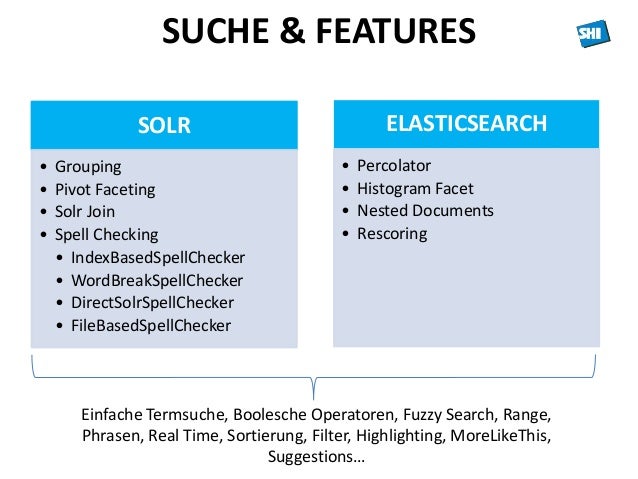

Caching plays a major role in search engines for faster responses.Solr also exposes metrics and APIs but not as extensive as Elasticsearch. Elastic search exposes multiple metrics to the users for monitoring, visualization, etc.This is done to increase the query efficiency as the number of shards/indexes increase, latency in fetching the results increase. It has a fixed number of primary shards that cannot be altered. Elastic search actually discourages this practice. Solr allows the addition of shards on the go based on the requirements of the applications.Solr itself is not very scalable, but SolrCloud, managed by a zookeeper, does the job. Elasticsearch is scalable and is very flexible when it comes to data clusters. To improve efficiency, it is recommended that they are modular and scalable. Search engines, by default, work with huge data sets.It can be considered as guided navigation. Faceting is a process that enables users to narrow down the query results. Solr has a special feature, facet search.Elasticsearch is a step ahead in this by analyzing logs and visualization along with basic text queries. Solr’s a focus is mainly on text search and related operations.When Solr was built initially, its main language was XML. Solr also supports JSON, but this feature was added recently. All the contributions made makes it to the product only when the development team of elasticsearch approves it.

Solr is truly open source in the sense that anyone can contribute to the product, whereas Elastic is slightly restricted. Elasticsearch is relatively new to the industry.
#Solr suggester vs searching software
Web development, programming languages, Software testing & others Start Your Free Software Development Course


 0 kommentar(er)
0 kommentar(er)
